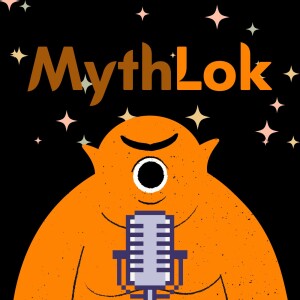
Mythlok - The Home of Mythology
History

The Hyang, which is represented in both Balinese and Java mythology as the Supreme Being, is considered to be either divine or ancestral. It can be regarded as a symbol of the Supreme Being in folk religions such as those of the Sunda Wiwitan, Kejawen, Cigugur Sundanism, and Kapitayan. In addition, other religions such as those of the Balinism and Javanism have also regarded this spiritual entity as a part of their own traditions.
The place where Hyang is located is called the Kahyangan, which literally means "the abode of Hyang," or "part of Hyang," according to Old Javanese tradition. According to old Javanese manuscripts, Hyang refers to the concept of omnipotence and also means "the powerful." This term is commonly used in the Sunda Wiwitan spirituality to refer to the powerful.
Balinism, refers to the Hyang as a personal form that has supernatural powers. It is believed that his arrival in a person's life provides them with great happiness and satisfaction. In Indonesia, people commonly refer to the term Hyang as referring to the creator, beauty, or all existence.
The Hyang's origins can be traced back to the origins of various words and phrases such as rahyang, sakyang, and dayang. In modern times, the term hyang is often used to refer to gods and certain haunted places. The word tiyang, which literally means "person," is believed to have come from the words hyang and ti.
The word priangan, which literally means "the abode of the noble Hyangs," is often used to refer to the place where the noble family lives. Dieng Plateau in Central Java is also derived from the combined words di-hyang and dah-hyang. Gunung Padang in West Java is from the word dah-hyang, which literally means "the sacred place of Hyangs." The word sembahyang, which literally means "worshipping," is a derivative of the Islamic shalat ritual.
Read more at https://mythlok.com/hyang/
view more
The place where Hyang is located is called the Kahyangan, which literally means "the abode of Hyang," or "part of Hyang," according to Old Javanese tradition. According to old Javanese manuscripts, Hyang refers to the concept of omnipotence and also means "the powerful." This term is commonly used in the Sunda Wiwitan spirituality to refer to the powerful.
Balinism, refers to the Hyang as a personal form that has supernatural powers. It is believed that his arrival in a person's life provides them with great happiness and satisfaction. In Indonesia, people commonly refer to the term Hyang as referring to the creator, beauty, or all existence.
The Hyang's origins can be traced back to the origins of various words and phrases such as rahyang, sakyang, and dayang. In modern times, the term hyang is often used to refer to gods and certain haunted places. The word tiyang, which literally means "person," is believed to have come from the words hyang and ti.
The word priangan, which literally means "the abode of the noble Hyangs," is often used to refer to the place where the noble family lives. Dieng Plateau in Central Java is also derived from the combined words di-hyang and dah-hyang. Gunung Padang in West Java is from the word dah-hyang, which literally means "the sacred place of Hyangs." The word sembahyang, which literally means "worshipping," is a derivative of the Islamic shalat ritual.
Read more at https://mythlok.com/hyang/
More Episodes
Jingwei's Flight: Defying the Ocean
 2023-09-27
2023-09-27
 2023-09-27
2023-09-27
Tsukuyomi : The Moon God
 2022-12-27
2022-12-27
 2022-12-27
2022-12-27
Ame-no-Uzume : The Goddess of Dawn
 2022-11-15
2022-11-15
 2022-11-15
2022-11-15
Tonenili : The Rain God
 2022-11-14
2022-11-14
 2022-11-14
2022-11-14
Vajrapani : The Protector
 2022-10-31
2022-10-31
 2022-10-31
2022-10-31
Enlil : The King of Gods
 2022-10-28
2022-10-28
 2022-10-28
2022-10-28
Erawan : The Mighty Elephant
 2022-10-27
2022-10-27
 2022-10-27
2022-10-27
Huldra : The Norse Troll
 2022-10-26
2022-10-26
 2022-10-26
2022-10-26
Saquasohuh : The Blue Star Kachina
 2022-10-25
2022-10-25
 2022-10-25
2022-10-25
Nanook : The Polar Bear God
 2022-10-24
2022-10-24
 2022-10-24
2022-10-24
Ix Chel : The Moon Goddess
 2022-10-22
2022-10-22
 2022-10-22
2022-10-22
Kaupe : The Hawaiian Werewolf
 2022-10-21
2022-10-21
 2022-10-21
2022-10-21
012345678910111213141516171819
Create your
podcast in
minutes
- Full-featured podcast site
- Unlimited storage and bandwidth
- Comprehensive podcast stats
- Distribute to Apple Podcasts, Spotify, and more
- Make money with your podcast
It is Free
- Privacy Policy
- Cookie Policy
- Terms of Use
- Consent Preferences
- Copyright © 2015-2024 Podbean.com





